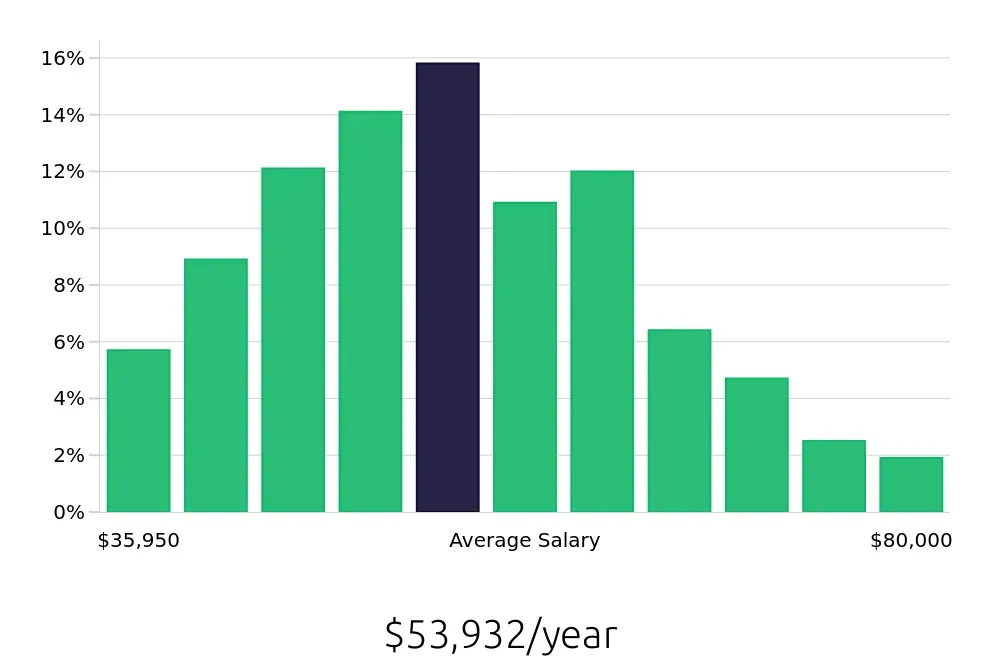Position
Overview
A CNC machinist operates computer numerical control (CNC) machines to create precise metal parts. They read blueprints and technical documents to understand the specifications of each part. CNC machinists set up the machines, load materials, and program the machines to follow the blueprints. They monitor the machines during operation to ensure accuracy and make adjustments as needed. After the parts are made, they inspect them for quality and make any necessary corrections.
CNC machinists work in various industries, including aerospace, automotive, and manufacturing. They use a variety of tools and materials, such as metals, plastics, and composites. They must have a strong understanding of math and engineering principles. CNC machinists often work in teams and communicate with engineers and other machinists to ensure the parts meet the required specifications. They must be detail-oriented and able to work with precision to produce high-quality parts.
Becoming a CNC machinist involves a series of steps that lead to a rewarding career in manufacturing. This profession is in demand, with opportunities in various industries. Follow these steps to start your journey as a CNC machinist.
First, gain a high school diploma or GED. This is the foundation for further education and training. Next, enroll in a vocational school or community college program. These programs offer courses in machining, blueprint reading, and computer-aided design (CAD). Completing a program provides hands-on experience and theoretical knowledge. After finishing the program, seek an apprenticeship or entry-level position. Working under experienced machinists helps build practical skills. Finally, consider obtaining certifications. Certifications in CNC machining can enhance job prospects and demonstrate expertise.
To succeed, follow these steps:
The journey to becoming a CNC Machinist involves several steps. First, a person needs to complete a high school diploma or GED. This is often the starting point for many career paths. After high school, a person can enroll in a vocational school or community college. These programs usually last 1 to 2 years. They teach the necessary skills and knowledge about CNC machines.
During these programs, students learn about machine operation, programming, and tool use. They also get hands-on experience with different types of machinery. Some programs offer internships or apprenticeships. These provide real-world experience and help students build a network in the industry. After completing a program, a person can gain more experience by working under a skilled CNC Machinist. This practical experience is valuable and can lead to better job opportunities. With dedication and hard work, a person can become a skilled CNC Machinist in a few years.
We are seeking a skilled CNC Machinist to join our team. The CNC Machinist will be responsible for operating and maintaining CNC machines to produce high-quality metal parts according to specifications.
Responsibilities:
Qualifications
A CNC machinist works with computer-controlled machines to create precise parts. This job requires skill and attention to detail. CNC machinists read and follow blueprints to program machines. They adjust settings and monitor machines to ensure quality. This career offers a mix of technical skills and hands-on work.
Working as a CNC machinist has its own set of advantages and challenges. Understanding these can help someone decide if this career is right for them. Here are some pros and cons to consider.
The job outlook for CNC Machinists offers a stable career path for skilled professionals. The Bureau of Labor Statistics (BLS) reports an average of 17,500 job openings each year. This steady demand highlights the ongoing need for skilled machinists in various industries. Job seekers can expect a consistent flow of opportunities in this field.
The BLS also forecasts a slight decrease in job openings by 4.8% from 2022 to 2032. While this change may seem concerning, it does not indicate a lack of demand. Instead, it reflects a shift in how industries utilize technology and automation. CNC Machinists who stay updated with the latest tools and techniques will remain valuable. This outlook encourages continuous learning and adaptation in the field.
CNC Machinists enjoy a competitive salary, with an average national annual compensation of $53,200. Hourly, the average compensation is $25.58. These figures reflect the skill and expertise required for the job. Job seekers can look forward to a rewarding career with good financial benefits. The combination of steady job openings and a strong salary makes CNC machining an attractive career choice.
